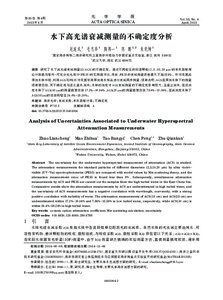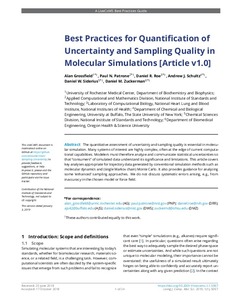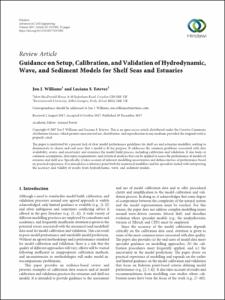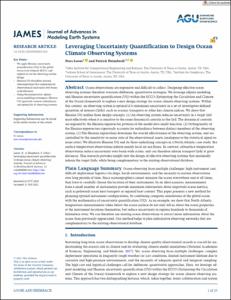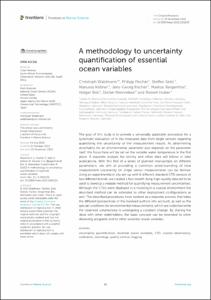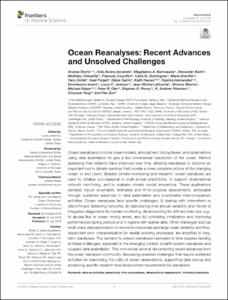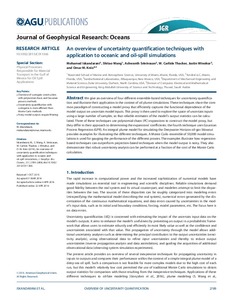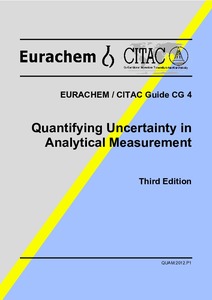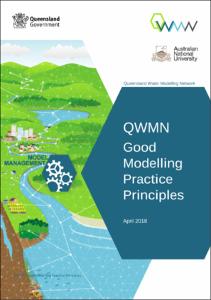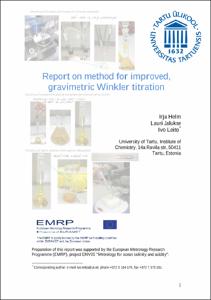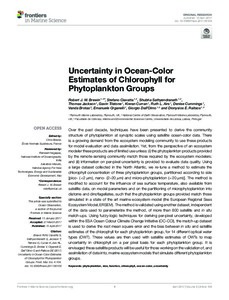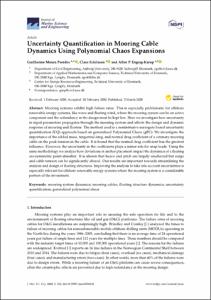Browsing by Subject "Uncertainty quantification"
Now showing items 1-14 of 14
-
Analysis of Uncertainties Associated to Underwater Hyperspectral Attenuation Measurements.
(2015)The uncertainty for the underwater hyperspectral measurement of attenuation (ACS) is studied. The attenuation measurements for standard particles of different diameters (2,5,10,20 mm) by ultra violet visible (UV-Vis) ... -
Best Practices for Quantification of Uncertainty and Sampling Quality in Molecular Simulations [Article v1.0].
(2019)The quantitative assessment of uncertainty and sampling quality is essential in molecular simulation. Many systems of interest are highly complex, often at the edge of current computational capabilities. Modelers must ... -
Guidance on Setup, Calibration, and Validation of Hydrodynamic, Wave, and Sediment Models for Shelf Seas and Estuaries.
(2017)This paper is motivated by a present lack of clear model performance guidelines for shelf sea and estuarine modellers seeking to demonstrate to clients and end users that a model is fit for purpose. It addresses the common ... -
Leveraging Uncertainty Quantification to Design Ocean Climate Observing Systems.
(2021)Ocean observations are expensive and difficult to collect. Designing effective ocean observing systems therefore warrants deliberate, quantitative strategies. We leverage adjoint modeling and Hessian uncertainty ... -
A methodology to uncertainty quantification of essential ocean variables.
(2022)The goal of this study is to provide a universally applicable procedure for a systematic evaluation of in situ measured data from single sensors regarding quantifying the uncertainty of the measurement results. As ... -
Ocean Reanalyses: Recent Advances and Unsolved Challenges.
(2019)Ocean reanalyses combine ocean models, atmospheric forcing fluxes, and observations using data assimilation to give a four-dimensional description of the ocean. Metrics assessing their reliability have improved over time, ... -
An overview of uncertainty quantification techniques with application to oceanic and oil-spill simulations.
(2016)We give an overview of four different ensemble-based techniques for uncertainty quantification and illustrate their application in the context of oil plume simulations. These techniques share the common paradigm of ... -
Quantifying Uncertainty in Analytical Measurement, 3rd Edition.
(Eurachem/CITAC, Teddington, UK, 2012)This Guide gives detailed guidance for the evaluation and expression of uncertainty in quantitative chemical analysis, based on the approach taken in the ISO “Guide to the Expression of Uncertainty in Measurement” [H.2]. ... -
QWMN Good Modelling Practice Principles.
(State of Queensland Department of Environment and Science, Queensland, Australia, 2018)Best practice modelling reduces model uncertainties and quantitatively and qualitatively documents any uncertainties and assumptions for user transparency. Conversely, poor modelling practices contribute to uncertainties ... -
Report on method for improved, gravimetric Winkler titration,
(University of Tartu, Institute of Chemistry,, Tartu, Estonia, 2013)This report presents a high-accuracy Winkler titration method that has been developed for determination of dissolved oxygen concentration. Careful analysis of uncertainty sources relevant to the Winkler method was carried ... -
Uncertainty estimates of remote sensing reflectance derived from comparison of ocean color satellite data sets.
(2016)Assigning uncertainty to ocean-color satellite products is a requirement to allowinformed use of these data. Here, uncertainty estimates are derived using the comparison on a 12th-degree grid of coincident daily records ... -
Uncertainty in Ocean-Color Estimates of Chlorophyll for Phytoplankton Groups.
(2017)Over the past decade, techniques have been presented to derive the community structure of phytoplankton at synoptic scales using satellite ocean-color data. There is a growing demand from the ecosystem modeling community ... -
Uncertainty Quantification in Mooring Cable Dynamics Using Polynomial Chaos Expansions.
(2020)Mooring systems exhibit high failure rates. This is especially problematic for offshore renewable energy systems, like wave and floating wind, where the mooring system can be an active component and the redundancy in the ... -
Uncertainty Quantification Use Case: Moored Temperature Sensor Measurement Uncertainty.
(2019)The oceanographic community acknowledges the need to better quantify the uncertainty of their measurements, but such quantifications are daunting. Requests for examples are often heard (Simpson, 2021). This example is ...
 Repository of community practices in Ocean Research, Applications and Data/Information Management
Repository of community practices in Ocean Research, Applications and Data/Information Management
